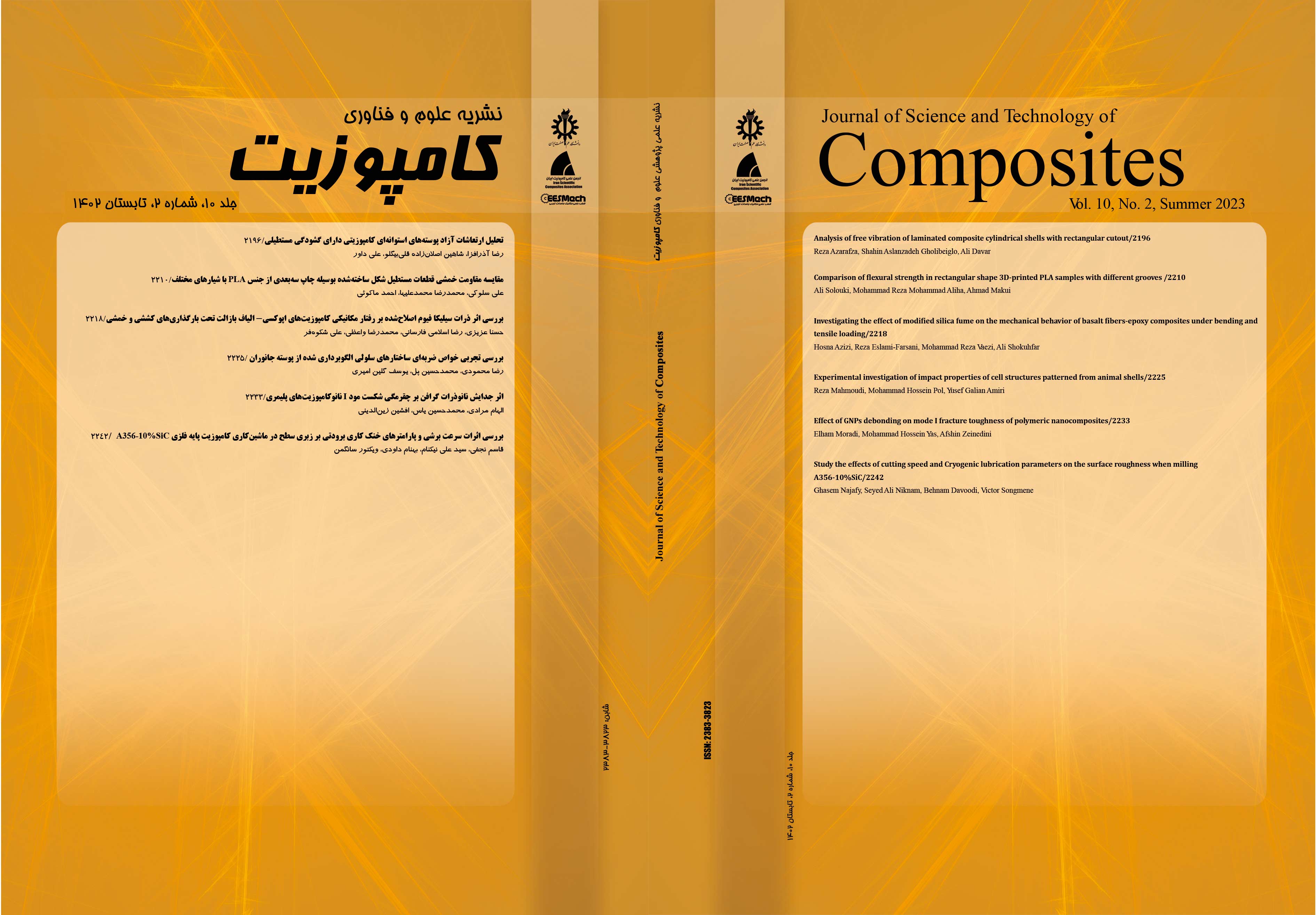Document Type : Research Paper
Authors
1 Department of Mechanical Engineering, Tafresh University, Tafresh. Iran
2 .Department of Mechanical Engineering, Tafresh University, Tafresh. Iran .
Abstract
Man always tries to get inspiration from nature and create new structures. One of these new structures is cellular and lattice structures, which have attracted the attention of researchers due to their low weight and appropriate compressive strength. In this article, inspired by nature and the structures in it, these structures have been investigated and modeled on creatures such as turtles, snails and sea shells. For this purpose, two models of each pattern were designed and made of Petg material using the additive method. The samples were subjected to the test of two consecutive impacts with the impact weight of 2.2 Kg and at two heights of 5 cm and 10 cm. The results showed that the highest and the lowest impact force at a height of 5cm respectively correspond to one of the samples taken from a turtle and one of the samples taken from a snail with a ratio of 325% and at a height of 10 cm, respectively, it corresponds to one of the turtle samples and snail samples, with a ratio of 200%. The highest and lowest displacement in the maximum force resulting from the impact is at a height of 5 cm, respectively, related to one sample taken from a snail and a turtle with a ratio of 252%, and at a height of 10 cm, respectively, it corresponds to one of the snail samples and turtle samples, with a ratio of 238%
Keywords
Main Subjects
